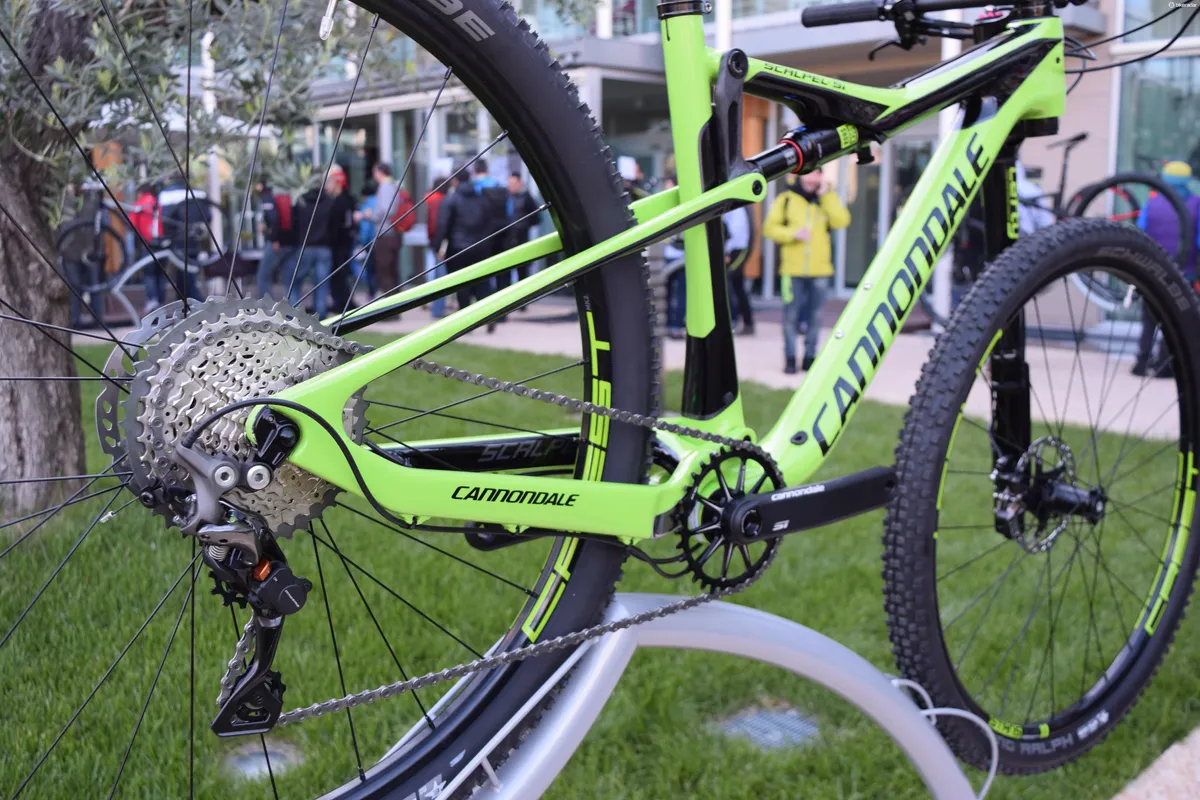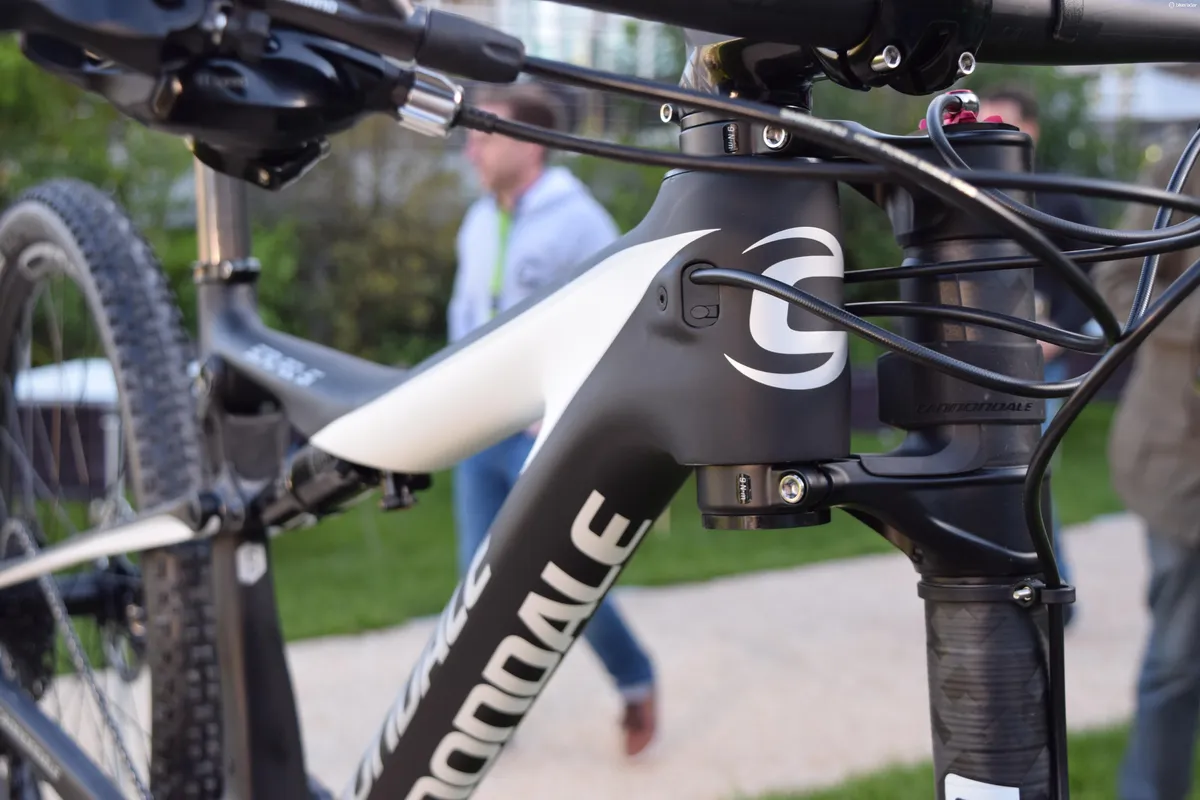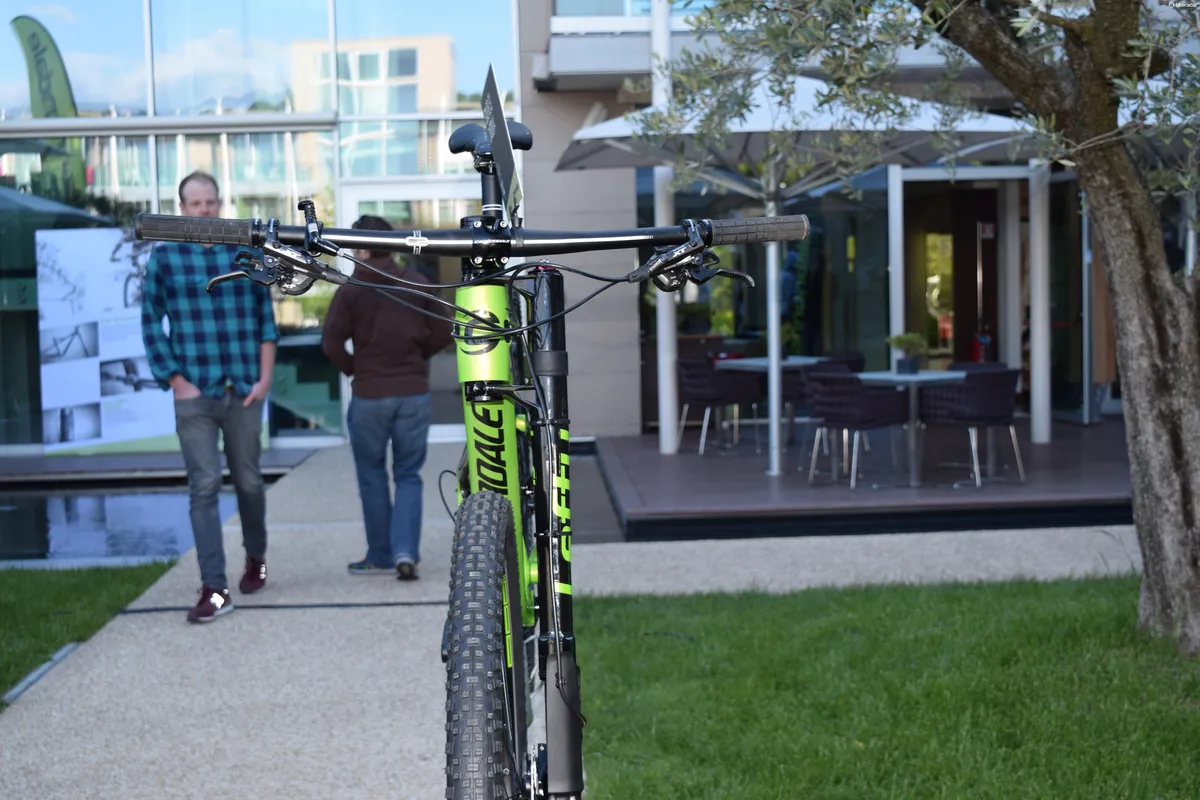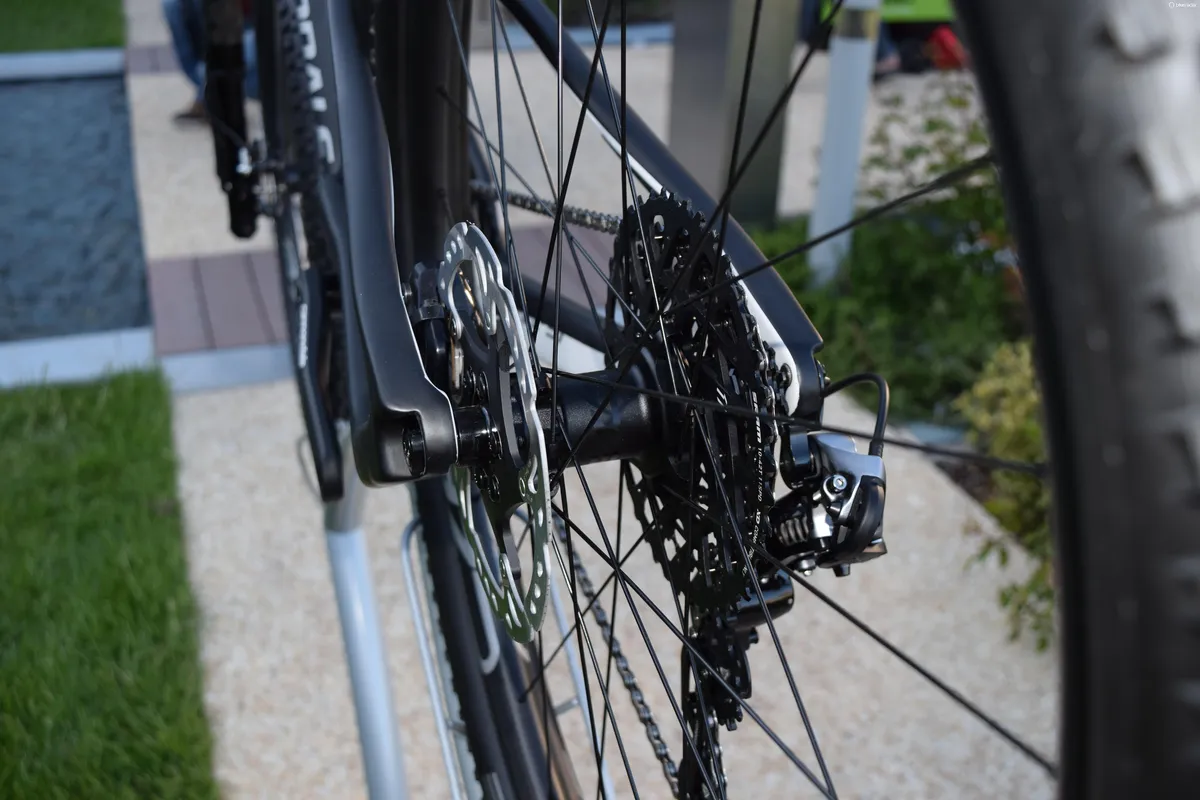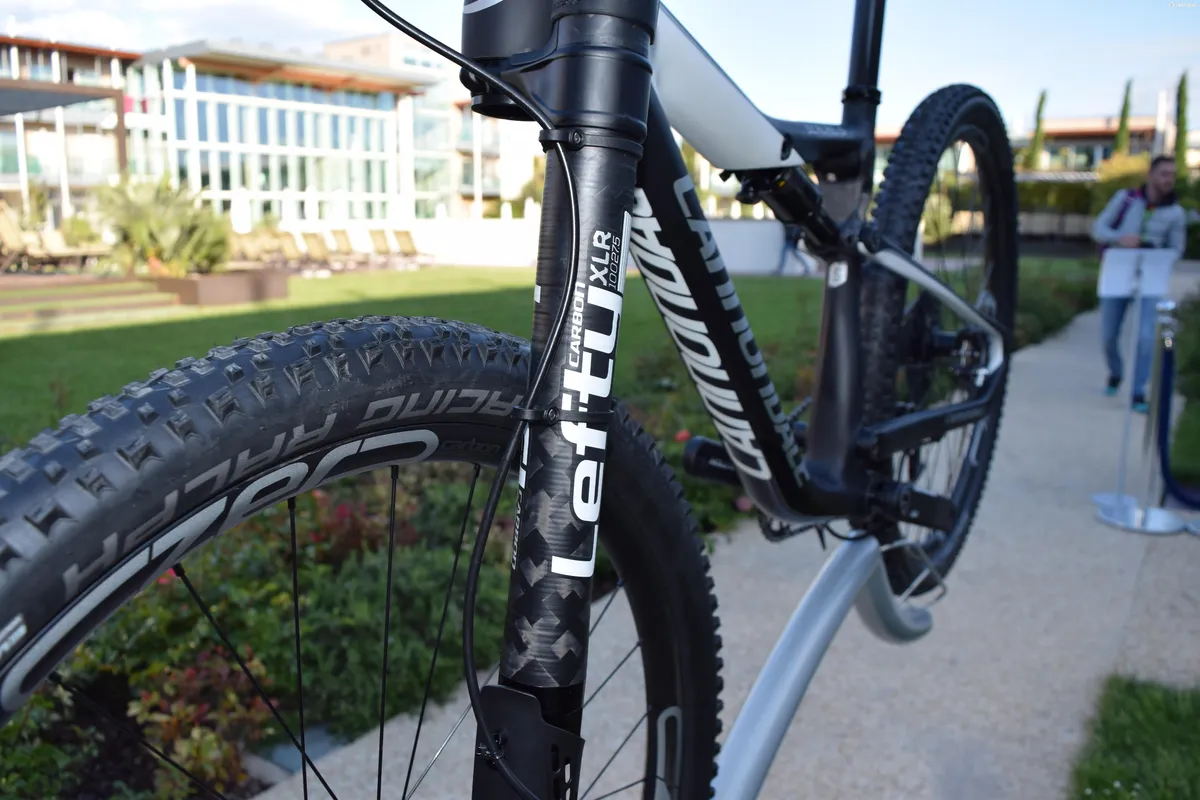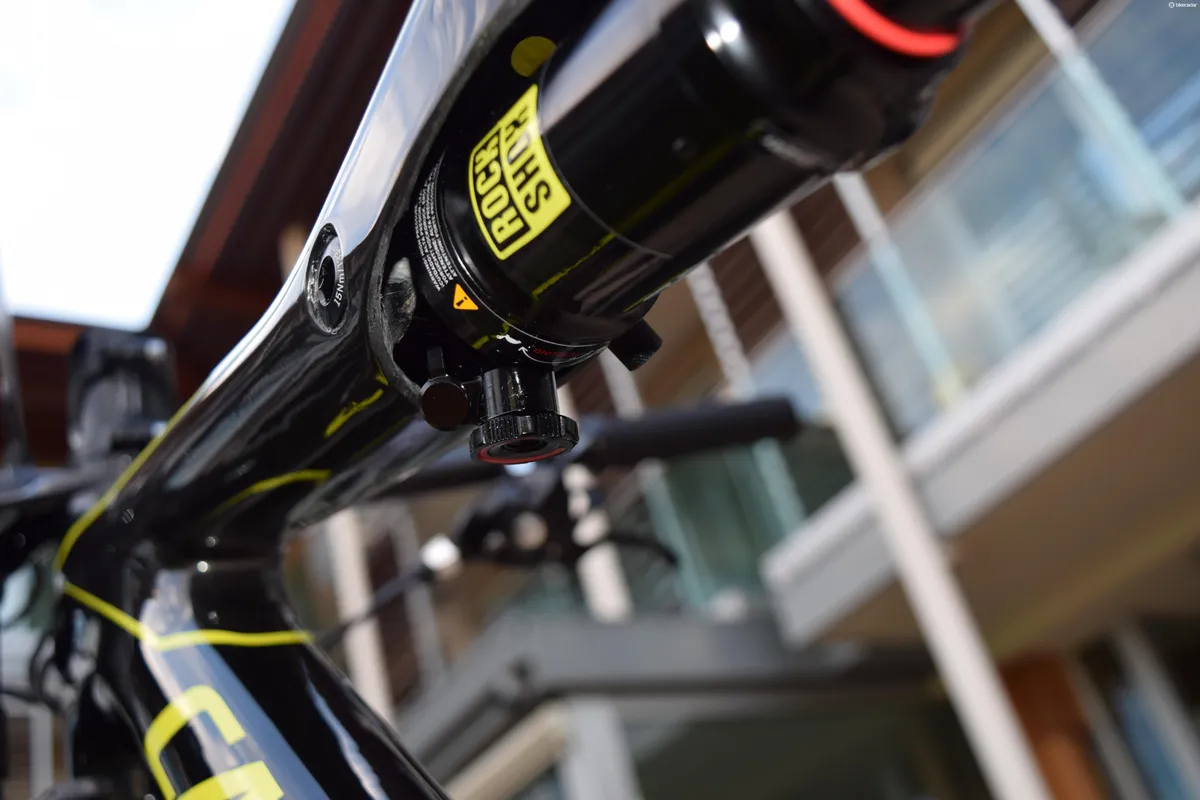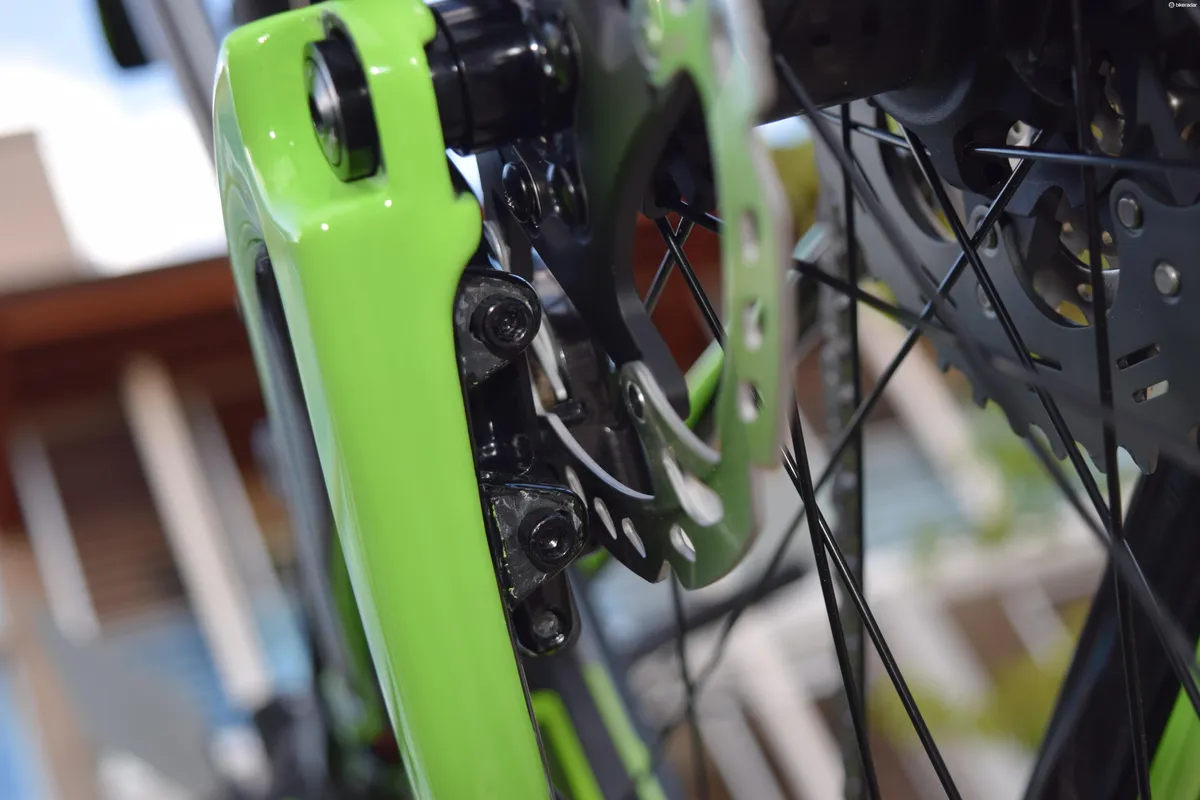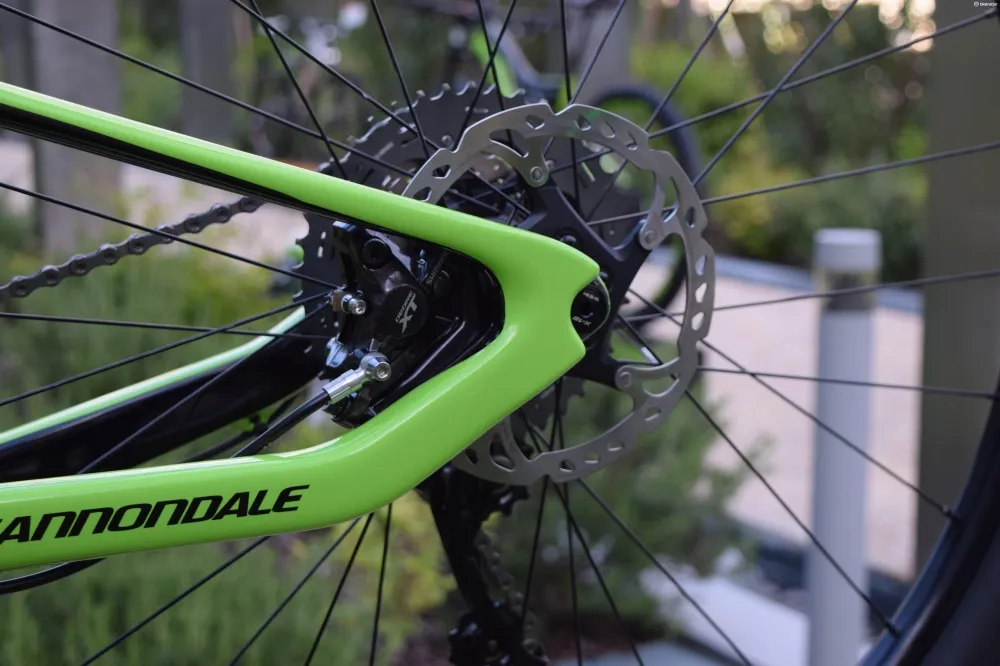When the head of Cannondale’s off-road product team says cross-country racing lives in their blood, you know they’ve been working hard to create the latest iteration of the Scalpel, the family of bikes which was one of the first to succeed at a world-class XC level.
Taking cues from the F-Si, Cannondale has integrated a number of new design ideas into its full-bore XC race machine. Longer, slacker geometry, fancy tricks with the rear end, and a few neat frame touches show the engineers haven’t been lazing.
Impact-resistant BallisTec carbon
Initial availability will be in the form of the carbon framed models, built with Cannondale’s BallisTec Carbon. All the usual carbon attributes are present: light weight, strenght, stiffness and so on, and Cannondale claims it’s nice and impact resistant too, because "it’s not a matter of if, but when, you’ll crash".
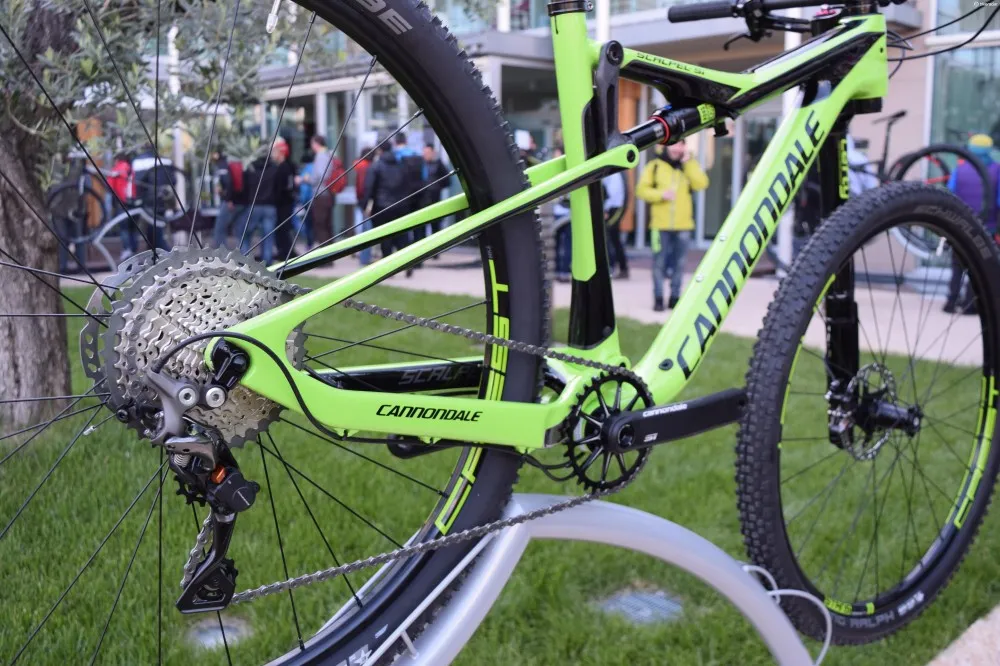
The BallisTec carbon frame has no pivots at the back, but flexes instead
Claimed weights are pretty impressive, with the frame, shock, hardware and rear axle reportedly coming in at 2118g (size L) – this compares favourably to the current S-Works Epic (2358g), old Scalpel (2220g) and current Trek Top Fuel (2142g) – all Cannondale’s claimed weights. Cannondale have also published a number of stiffness measurements, all of which look good compared to the competition. Alloy versions will also be available later in the year.
Other nice touches include a modular internal cable routing system, a neat Shimano Di2 battery port, which itself doesn’t get in the way of internally routed droppers – something which we reckon you’ll see more and more of in XC races.
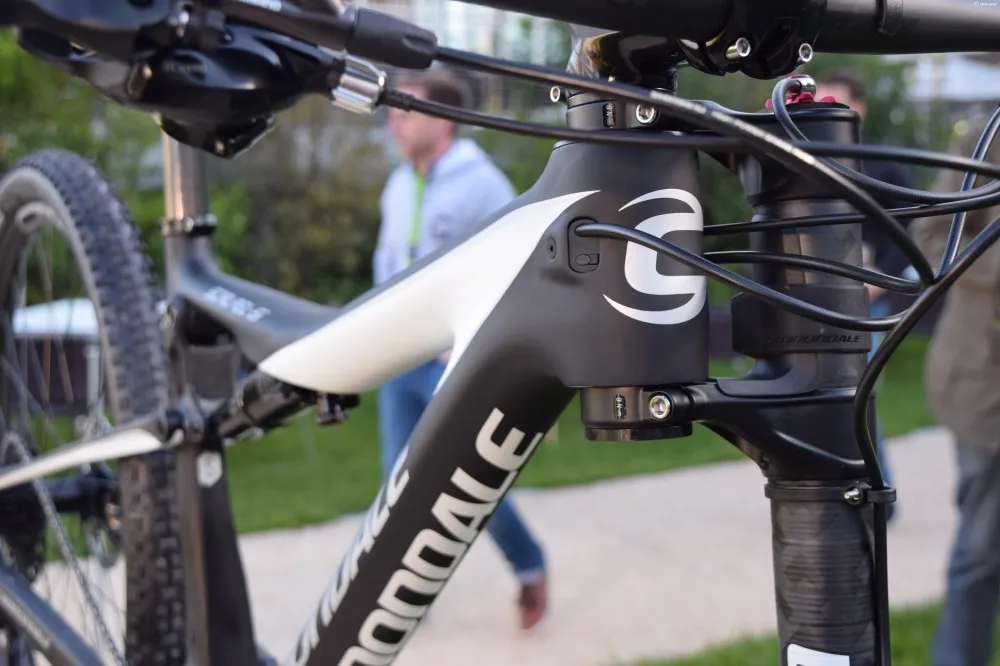
Neat modular cable routing for 1x, 2x, Di2 and stealth dropper options
Newly designed pivot systems and a custom banjo for the hydraulically locked-out RockShox Monarch shock are also nice features. For the first time, we’re also seeing the road bike flat-mount brake mounting standard used, which is used on the chainstay to reduce the impact mounting the brake has on the flex of this area – needed for the suspension’s kinematics.
Cross-country slacker, but no slouch
If you come from the world of trail bikes, the Scalpel’s geometry might seem middle of the road, but for XC racers, this is a bit of a departure. Looking at the Large 29er version, we see a reach of 445mm, which isn’t too shabby, mated to a 69.5 degree head angle and 55mm fork offset.
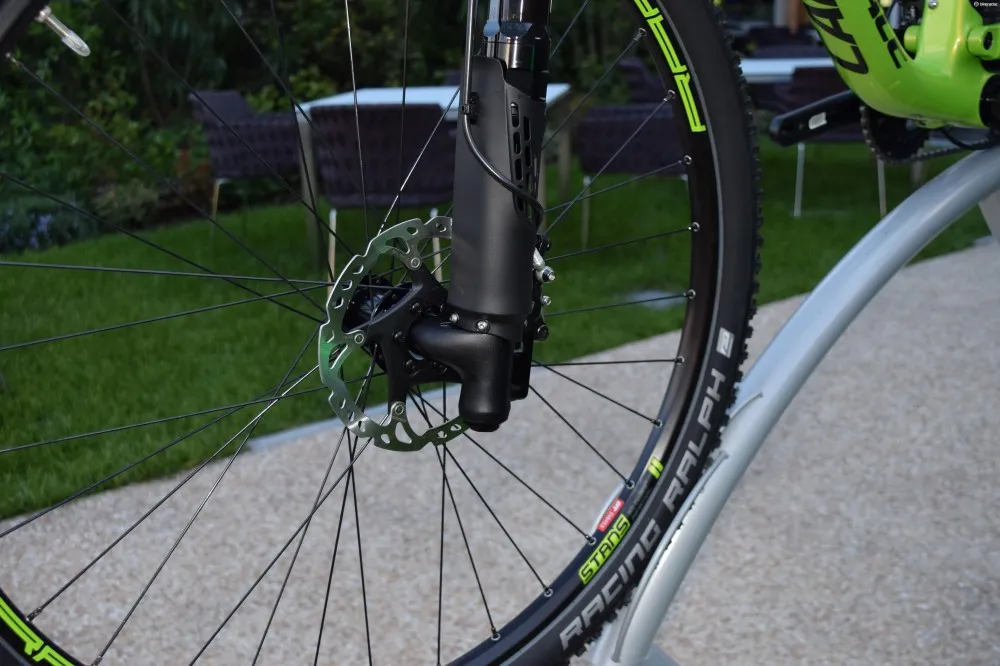
Longer than standard offsets set the Lefty fork apart from other off-the-shelf options
Cannondale says this gives a long front centre, and stable handling at speed, without the floppy handling at low speeds that slacker head angles can give.
Top tubes have been stretched more than 10mm over the hardtail F-Si, and stems are correspondingly shorter, by 10mm (stem length is size-dependent). This is because Cannondale reckoned its pro riders, such as Manuel Fumic, would pick the Scalpel on gnarlier courses and save the F-Si for less techy options. As such, we’re also seeing wider bars.
Sizing wise we’re seeing XS, S and M for women, and S for men using 650b wheels (with a 50mm offset fork) and M, L and XL men’s bikes with the 55mm offset.
Ai back end
At the back Cannondale has integrated its Ai system. Instead of the increasingly common Boost hub standard, the brand is sticking with 142x12mm, but the drivetrain is shifted 6mm to the right thanks to kinked dropouts and modified crank spiders. This gives plenty of mud clearance and allows for 435mm chainstays without the usual constraints of a thin chainstay to give this room.
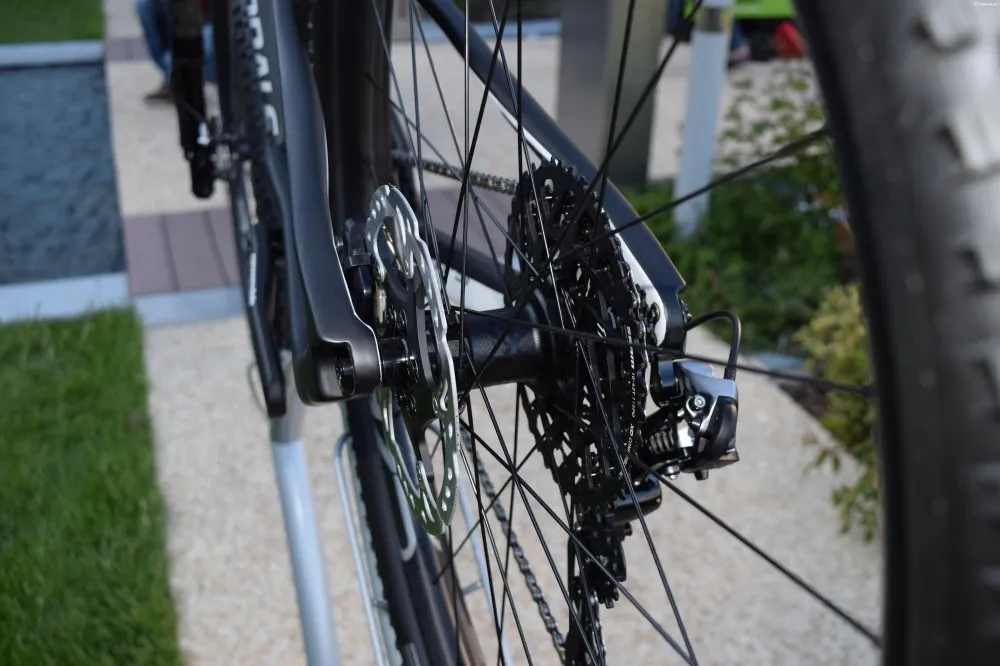
6mm to the right: 'Ai' dropouts are there to give a stiff and short back end
It also means the rim is effectively built off-centre from the hub (to centre it in the frame). This allows both drive and non-drive spokes to be the same length, and better triangulation of the wheel build, for a stiffer wheel.
Range details and pricing
- Scalpel Si Black Inc – $11,999 / £7,999
- Scalpel Si HM Team – $8,999 / £7,299
- Scalpel Si HM Race – $8,499 / £6,299
- Scalpel Si HM 1 – $6,999/ £4,999
- Scalpel Si Crb 2 – $5,999 / £4,699
- Scalpel Si Crb 3 – $4,499 / £3,799
- Scalpel Si Crb 4 – $3,999 / £3,299
- Scalpel Si Al 5– $2,999 / Not available in the UK
- Scalpel Si Crb Women's 1 – $5,999 / £ TBC
- Scalpel Si Crb 2 Al – $3,999 / £ TBC

